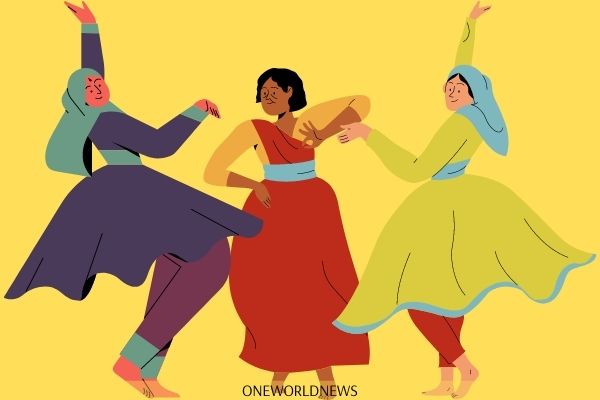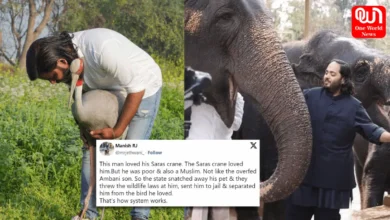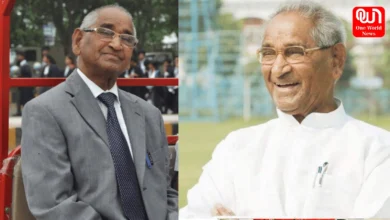
How did Tawaifs fall from grace and came to be known as prostitutes?
Tawaif, the Awadhi term for highly skilled prostitutes, rose to fame between the 18th and 19th centuries in the royal court of Awadh in present-day Uttar Pradesh. They sang, danced, and were the bearers of all that was considered good taste and high fashion. They took Persian influence from the court of Shia kings and married them to Indian forms, and from them, we inherited Kathak and Dadra and Thumri.
Prostitutes were broadly divided into two groups, the lineage (hereditary) and the new entrants. The training of singing and dancing was an important feature of the training of prostitutes. From the age of six or seven, girls were asked to learn music and dance from masters. It involved long hours of practice and rehearsal. Most of them enjoyed it. In addition, they developed the art of good manners, chivalry, and courtesy. Most importantly, there was a habit of conversation, especially with male clients, that was bound by cynicism, counterintelligence, and the proper use of Urdu (and sometimes Persian) couplets.
How Bollywood Portrays Tawaifs?
Bollywood portrays characters like Chandramukhi, Umrao, Pakeezah, Anarkali. Rekha’s Filmfare award-winning performance in Muzaffar Ali’s Umrao Jaan (1981) established her, while Pakeezah (1972) Meena Kumari’s performance was stellar. Cinema always portrayed courtesans as stock characters whose lives are intertwined in a morality tale.” Either vamp demonstrating sexuality or prostitutes with a heart of gold, their characters were doomed to stay unmarried, and invariably achieved redemption only through death. The films successfully diluted the tawaif’s life and times.
Celebrities like Rekha, Madhuri, Rani Mukerji, and Katrina Kaif have brought themselves on the big screen as tawaifs. In this sense, taking the names of Tawaifs in this era will not consider you corrupt. Now the question comes that after all, who are those tawaifs, whose name deserves respect? So let us introduce them-
1. First Indian singer Gauhar Jaan: You may not remember the date of November 2, 1902, but this day was very special for the Indian music world. Since the first Indian song was recorded on disc on this day. In the recording, the name of this singer who sang ‘Khayal’ in Raag Jogia was Gauhar Jaan. She was a famous Tawaif of Banaras and Calcutta. Gauhar Jan was the most expensive tawaif in the early 19th century. It is said that only after taking one hundred and one guineas of gold, she agreed to sing in a gathering.
2. Begum Hazrat Mahal, who stunned the British: Known as the ‘Begum of Awadh’, Muhammadi Khanum was a tawaif by profession. She had a dozen kothas in Awadh. The magic of her dance and music was such that the Nawab of Awadh, Wajid Ali Shah, married her and named her Begum Hazrat Mahal. When the British captured Awadh in 1856, Wajid Ali Shah fled to Calcutta. But, Begum did not go anywhere from her palace. She declared his son Birjis Kadra as the king of Awadh and took over the reins of governance. The name of Begum Hazrat Mahal is also taken among those who stifled the British in the revolt of 1857. She along with Tatya Tope tried to win this war.
Read More: Why is the Clubhouse app getting famous?
3. Sanjay Dutt’s maternal grandmother Jaddanbai: Yes, Nargis was indeed Jaddanbai’s daughter and Sanjay Dutt was her grandson. In the early nineteenth century, Jaddan Bai’s name was taken very fondly among music connoisseurs. Jaddanbai was born in 1892. She took her initial musical training from Bhaiya Saheb Ganpat of Calcutta, after which Ustad Moinuddin Khan taught her Ghazal singing. The Columbia Gramophone Company made her famous overnight by taking her records in the market. It is said that Jaddanbai’s kothas were spread from Banaras, Calcutta to Mumbai. Apart from a tawaif, her second identity is that she was the first female music director of the Indian film industry.
4. Zohra Bai: Zohra Bai is considered one of the Indian classical music pillars. Her name is as respectable as Gauhar Jaan. The owner of the masculine voice, Zohrabai, belonged to the Agra Gharana. Her work can be gauged from the fact that musicians like Ustad Sher Khan had received music training from her. Some of her 78 compositions are available on record.
5. Rasoolan Bai: Rasoolan Bai, the architect of the Banaras Gharana, was born in 1902. Sarangi players Aashiq Khan and Ustad Najju Khan introduced her to musical instruments. Ustad Bismillah Khan was also a fan of Rasoolan Bai. They used to call her the divine voice. Rasoolan Bai Thumri was making the whole of Uttar Pradesh crazy. When the country was partitioned in 1947, she refused to go to Pakistan and kept her room in Banaras itself.
The word tawaif is today used as profanity. That wasn’t always the case. Some were trained classical singers and some were hailed as freedom fighters. We can take an example from Japan. In Japan, Geisha which literally means artisans has a great respect in Japan’s culture. Japanese geisha that look exactly like dolls, wears traditional Japanese clothing called kimono. Japanese geisha is an artist by profession. Which entertains the guests in Japan in a feast, a joyous ceremony or on a special occasion through her arts.
These geishas are well versed in many Japanese arts. For example, in dance, music or any instrument as well as in the art of communication. They also serve tea or wine or other beverages to the guests. The wine is called saki in Japan. The Japanese also consider serving beverages to guests an art in which these geisha specialize. Post-1857, it wasn’t only the Mughal dynasty or Nawabs of Awadh who were destroyed, but an era was destroyed: A culture was destroyed.
The “arbab-e-nishat” or kathak dancers and classical singers were now the “nautch girls” (from word naach or dance). Now, there are no balakhanas, where music and dance flourished, just kothas where more often than not, girls are kidnapped, lured and forced into the flesh trade against their will.
Have a news story, an interesting write-up or simply a suggestion? Write to us at info@oneworldnews.com








